|
 Psilocybe makarorae Psilocybe makarorae
SynonymsPsilocybe caerulipes aff.
BiostatusPresent in region - Indigenous. Endemic
Images (click to enlarge)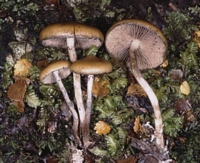
Owner: P.R. Johnston | 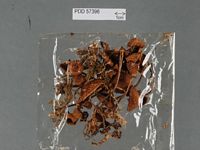
Caption: Dried type specimen
Owner: Herb PDD | 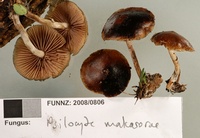
Owner: J.A. Cooper | 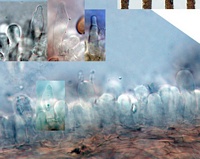
Caption: upper:cheilocystidia. Lower: pleurocystidia and basidia
Owner: J.A. Cooper | 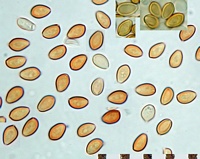
Caption: spores
Owner: J.A. Cooper | 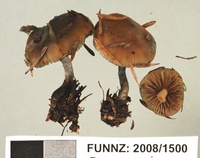
Owner: J.A. Cooper | 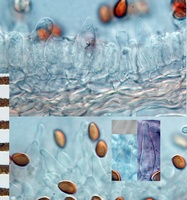
Caption: top: pleurocystidia. Bottom: cheilocystidia. In KOH
Owner: J.A. Cooper | 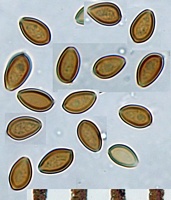
Caption: spores in KOH
Owner: J.A. Cooper | |
Article: Johnston, P.R.; Buchanan, P.K. (1995). The genus Psilocybe (Agaricales) in New Zealand. New Zealand Journal of Botany 33(3): 379-388 (http://www.rsnz.org/publish/abstracts.php).
Description: Pileus 15-55 mm diam., conical to campanulate, expanding to convex with prominent, often more or less pointed umbo; dry to slightly tacky; yellow-brown to orange-brown, often paler towards the finely striate margin; staining greenish-blue with damage; flesh white. Gills adnexed, pale greyish-brown; margin concolorous. Stipe 30-60 x 2-4 mm, cylindrical, silky, innately fibrillose, white, often brownish at base, staining greenish-blue with damage, with white rhizoids at base; veil cortinoid, its remnants often visible on stipe, but never forming annulate ring. Basidia 25-31 x 7-8.5 µm, sub-clavate, tapering slightly to base, 4- spored, clamped. Cheilocystidia 18-26 x 6-9 µm, ventricose-rostrate to mucronate, with simple neck 3-5 µm long, hyaline, thin-walled, clamped. Pleurocystidia similar in shape to cheilocystidia, but narrower, 4-8 µm wide, and neck usually shorter, 2.5-4 µm. Spores (6.5-)7.5 9.5(-10.0)x 5.5-6.5 x 4.5-5.5 µm, average 8.7 x 6.0 x 5.3 µm, in face view ovate to subrhomboid, in side view elliptical: Wall brown, smooth, about 0.8-1 µm thick, with apical pore. Pileipellis a cutis of long-celled, 2-3 µm diam., gelatinised hyphae. Hypodermium filamentous, of 4-6 µm diam. cells with pale brown walls. Clamps common. Subhymenium poorly developed, sub-cellular, of 2-4 µm diam. cells with very pale brown walls. Hymenophoral trama more or less regular, of short cylindric, 3-6 µm diam. cells with hyaline walls.
Habitat: Fallen, rotting wood.
Distribution: Known only from New Zealand: Bay of Plenty, Westland, Otago Lakes, Dunedin.
Notes: Named after the geographic locality of the type specimen. Margot & Watling (1981) examined FDD 49788, and considered that it was similar to P. caerulipes (Peck) Sacc. P. caerulipes, belonging in section Semilanceatae of Guzman (1983), is distinguished by its lack of pleurocystidia, different spore shape, and longer-necked cheilocystidia. Spore shape and the blueing reaction place P. makarorae in section Mexicanae of Guzman (1983). The size of the caps, the presence of pleurocystidia, and the short-necked cheilocystidia distinguish P. makarorae from the six species accepted in this section by Guzman.
|